Since 1958, the Society of Illustrators has elected to its Hall of Fame artists recognized for their “distinguished achievement in the art of illustration.” Artists are elected by a prestigious committee that includes former presidents of the Society and illustration historians. They are chosen based on their body of work and the impact it has made on the field of illustration. This year’s honorees include contemporary illustrators Thomas Blackshear, Barbara Nessim, and Drew Struzan, as well as posthumous honorees Edmund Dulac, Jean Henri Gaston Giraud (Mœbius), and Jeffrey Catherine Jones. These artists join a list of the greatest names in illustration!
The Society will be honoring this year’s inductees at The Hall of Fame Induction Ceremony on Friday, June 12, 2020. Details about the event will be released in the coming months.
About the Recipients:
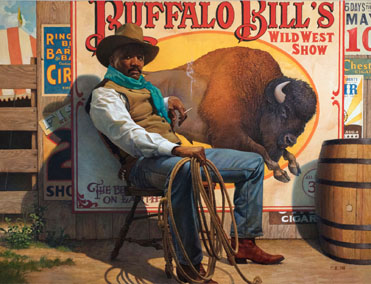
After graduating from the American Academy of Art in Chicago, Thomas Blackshear worked for the Hallmark Card Company in Kansas City, Missouri. While there, he met the famous illustrator Mark English and became his apprentice. By 1980, he was working as head illustrator for Godbold/Richter Studio, and in 1982 went full-time as a freelance illustrator. Known for his dramatic lighting and sensitivity to mood, Blackshear has produced illustrations for advertising, books, calendars, collectors’ plates, greeting cards, magazines, postage stamps, and national posters. His clients range from Disney Pictures, George Lucas Studios, and Universal Studios to International Wildlife and National Geographic magazines. He has illustrated thirty US postage stamps and a commemorative stamp book titled I Have a Dream. Blackshear has also designed and executed illustrations for four collectors’ plate series. He is known for his best-selling Christian prints produced for DaySpring’s Masterpiece Collection. In 1995 he created Ebony Visions, which has been the number-one-selling black figurine collectible in the United States for the past twenty years. He is the recipient of multiple awards and recognitions. In 2006, at a solo-show, Blackshear unveiled his painting of Pope John Paul II for the 25th Anniversary of the Pope John Paul II Foundation in Rome
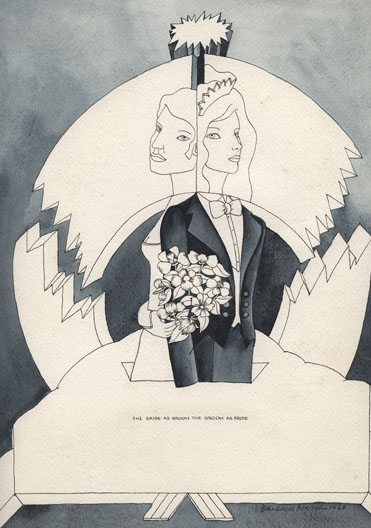
Barbara Nessim briefly worked in the textile industry after graduating from Pratt Institute in 1960. That same year, Nessim entered the Society of Illustrators’ 2nd Annual, and received recognition for her monotype etchings “Man and Machine”. With this prestigious accolade, Nessim began receiving commissions and became a professional illustrator, appearing in such notable publications as Harper’s Bazaar, Esquire, Rolling Stone, TIME, Ms. Magazine, New York Magazine, and The Boston Globe, among others. Working as one of only a few women illustrators during the 1960s, Nessim paved the way for generations to come. Nessim’s art was also featured on album covers, calendars, various corporate projects, and international magazine covers. In the 70’s alongside doing illustration she designed shoes for Carber, as well as her own line of clothing Lady Vantastic for Lady Van Heusen. In 1980, Nessim was one of the first illustrators ever to experiment with digital art and illustration, using TIME Inc’s Time Video Information Services’ computers, serving as their Artist in Residence. Nessim has taught at the School of Visual Arts, Fashion Institute of Technology, and Pratt Institute, and from 1991 to 2004 she served as the Chair of the Illustration Department at Parsons The New School For Design, introducing computers into her curriculum which launched a school wide initiative. In 2013, a body of Nessim’s work was featured in an extensive retrospective at the Victoria & Albert Museum in London. In 2015 she received Pratt Institutes’ Lifetime Achievement Award. In addition to her illustration and teaching work, Nessim has also created several large-scale installations for public buildings in New York City. She is now working on a major show of paintings for the Malin Gallery in NYC opening October 15, 2020. Throughout her professional career, Nessim continued to create personal work which greatly informed her illustrations.
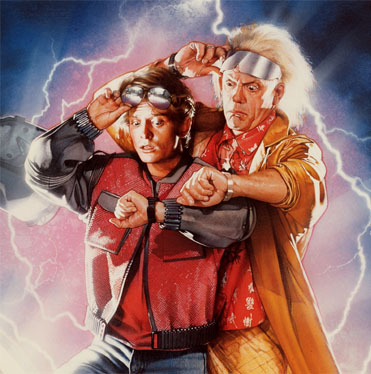
Drew Struzan is one of pop-culture’s most easily recognizable contemporary illustrators. His childhood was one of poverty. College did not change that cycle. Nevertheless, his talent earned him a full scholarship from Art Center College of Design straight out of high school. Painting for other students earned him occasional meals. After college, Drew accepted a job at a boutique ad agency that specialized in album covers. His work included The Beach Boys, Bee Gees, Roy Orbison, Black Sabbath, Glenn Miller, Bach, Earth, Wind and Fire, Liberace, and (his most famous cover) Alice Cooper’s Welcome to My Nightmare. The latter seized the attention of the movie industry and, thus, Drew’s career moved in a new direction. In 1977, Struzan was asked to co-create the poster art for the re-release of Star Wars. His co-creator showed him the marvel of the airbrush which Drew used to create a new technique for the high-demand and quick turnover world of movie art. His poster work includes such blockbuster titles as Star Wars (from episode 1 to episode 7), Blade Runner, Police Academy, Back to the Future, the Indiana Jones series, E.T., The Muppet Movie, Coming to America, Risky Business, An American Tail, The Goonies, Hook, Harry Potter and the Sorcerer’s Stone, and more. Struzan found success in additional genres of illustration including collectibles, postage stamps, and board games. His most recent project, a collaboration with his wife and author Dylan Struzan, features his illustrations in her book A Bloody Business, published in 2019.
(Back to the Future I, II & III. © Copyright Universal Studios 1985-1990)
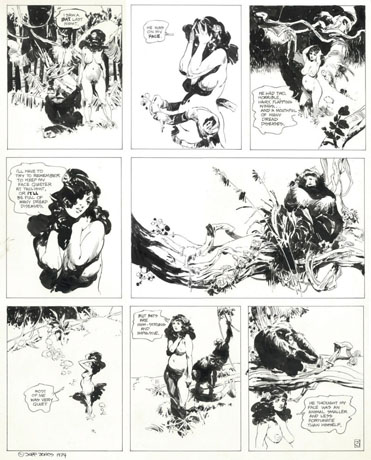
Jeffrey Catherine Jones was an artist ahead of their time. Born in Atlanta, Georgia, Jones escaped a tumultuous childhood, and attended college at Georgia State College, meeting fellow artist and then-wife Louise Simonson. Upon graduation, the growing, young family relocated to NYC and the two artists started their illustration and comic careers. Jones’ science-fiction, horror, and fantasy illustrations first appeared on magazine and paperback covers for books including Fritz Leiber’s Fafhrd and the Gray Mouser series, Ted White’s Fantastic, Andre Norton’s Postmarked the Stars, The Zero Stone, Uncharted Stars, among others. During the 1970s, Jones co-founded the collective “The Studio” with colleagues Bernie Wrightson, Barry Windsor-Smith and Michael Kaluta. During this time, Jones’ strip Idyl began appearing regularly in the newly formed National Lampoon, and in the 1980’s another strip, I’m Age, was featured regularly in Heavy Metal. Disenfranchised with the comics and commercial art scene, Jones would retire and focus on fine art, creating masterful oil paintings. At a time of self-reflection and discovery in art, Jones would also come to terms with their own identity. In 1998, with the support of daughter Julianna, Jones began transitioning using hormone replacement therapy, and changed their name to Jeffrey Catherine Jones. The last years of Jones’ life were complicated and difficult as Jones strived to understand her place in the world, artistically and personally. On May 19th, 2011, after battling illness, Jones passed away surrounded by friends and family.
* Out of respect for the artist, we have chosen to use the neutral third person pronoun when referring to a time before Jones’ transition, as Jones is no longer with us to clarify what pronoun they would prefer.
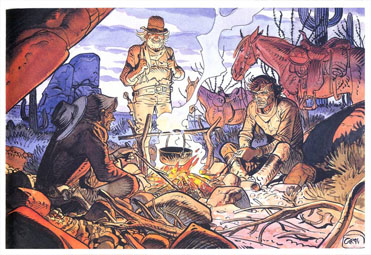
French artist, writer, and cartoonist Jean Henri Gaston Giraud garnered worldwide acclaim under the pseudonyms Mœbius and Gir. Born in the suburbs of Paris in 1938, Giraud spent his youth navigating a post-World War II reconstructivist Europe, finding solace in a movie theater where he discovered American Westerns. After a short stint at art school followed by a stay in Mexico and time in military service, Giraud joined French publisher Fleurus. Among his titles published there are Le Roi des Bisons (King of the Buffalo), Un Géant Chez les Hurons (A Giant with the Hurons), among others. Giraud left the publisher to apprentice with Belgian artist Joseph “Jije” Gillain, an important milestone for the young artist’s career. Under the pseudonym Gir, Giraud created one of his best-known Western comic series for the publisher Pilote, a story centered around the anti-hero character Lieutenant Mike Blueberry. With the popularity of this series, Giraud soon found work creating concept art, character designs and storyboarding for such titles as Dune (Alejandro Jodorowsky version), Alien, Tron, Space Jam, and The Fifth Element, and his work strongly influenced additional titles like Blade Runner and Star Wars. After leaving Pilote, Giraud began producing work in a new aesthetic and under the name Mœbius. His work The Airtight Garage and Arzach, published by Métal Hurlant (Heavy Metal), a publication he helped form, are the best examples of this new style. The work created under the Mœbius name, best known by his American fans, showcased his skill in the science fiction and fantasy genre, commercial work, trading cards, video games, and musical productions. During the 1980s, Giraud relocated to California, and began creating art for the powerhouse Marvel Comics. His work appeared in Silver Surfer, Hardware, Static, and Marvel Tales. During his lifetime, Giraud received an endless list of accolades and awards, created art for countless titles, and exhibited at a number of galleries and museums.
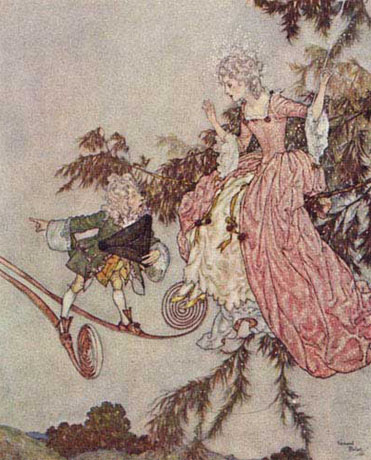
French/British artist Edmund Dulac’s illustrations appeared in magazines, books, and stamps. A native of France, Dulac spent a brief period of time at the Académie Julian before moving to London in 1904. His first commissions were for the publisher J.M. Dent, appearing in the book Jane Eyre, and subsequently created the art for nine other volumes of work by the Brontë sisters. An early creator of fantasy art, he was a regular contributor of the Pall Mall Magazine, and prints of his work were published in illustrated gift books such as Stories of The Arabian Nights, William Shakespeare’s The Tempest, The Rubaiyat of Omar Khayyam, The Sleeping Beauty and Other Fairy Tales, Stories from Hans Christian Andersen, The Bells and Other Poems by Edgar Allen Poe, among others. During World War I, Dulac contributed to relief books. With the total destruction and enormous loss of life from the war, the demand for printed books declined, and Dulac found a lack in publishing opportunities. His last titles included Edmund Dulac’s Fairy Book, Tanglewood Tales, and The Kingdom of the Pearl. He found work elsewhere in magazine illustrations and was featured in The American Weekly. His “Gods and Mortals in Love” appeared on the pages of Country Life. He also found work creating art for theater costumes and set design, bookplates, advertising, stamp design, and banknotes.
About the Museum of Illustration at the Society of Illustrators:
Founded in 1901, the Society of Illustrators and its Museum of Illustration together comprise America’s longest-standing nonprofit organization dedicated to the art of illustration. The mission of SI/MI is to promote the art and appreciation of illustration and its history and evolving nature through exhibitions and educational programs.
Image credit info:
- Thomas Blackshear, Wild West Show. Oil.
- Barbara Nessim, The Bride As Groom & Groom As Bride. Ink and watercolor, 1968.
- Drew Struzan, Back to the Future I, II & III. Acrylic paints and colored pencils on gessoed board, 1985. (© Copyright Universal Studios 1985-1990)
- Jeffrey Catherine Jones, Idyl. National Lampoon, 1974. Ink.
- Jean Giraud, Blueberry’s Stardom, 1994.
- Edmund Dulac, Sleeping Beauty and Other Fairy Tales. Published by Hodder and Stoughton, Londong (1909).
For media inquiries please contact:
Kate Feirtag
Director of Communications and External Relations
kate@societyillustrators.org
